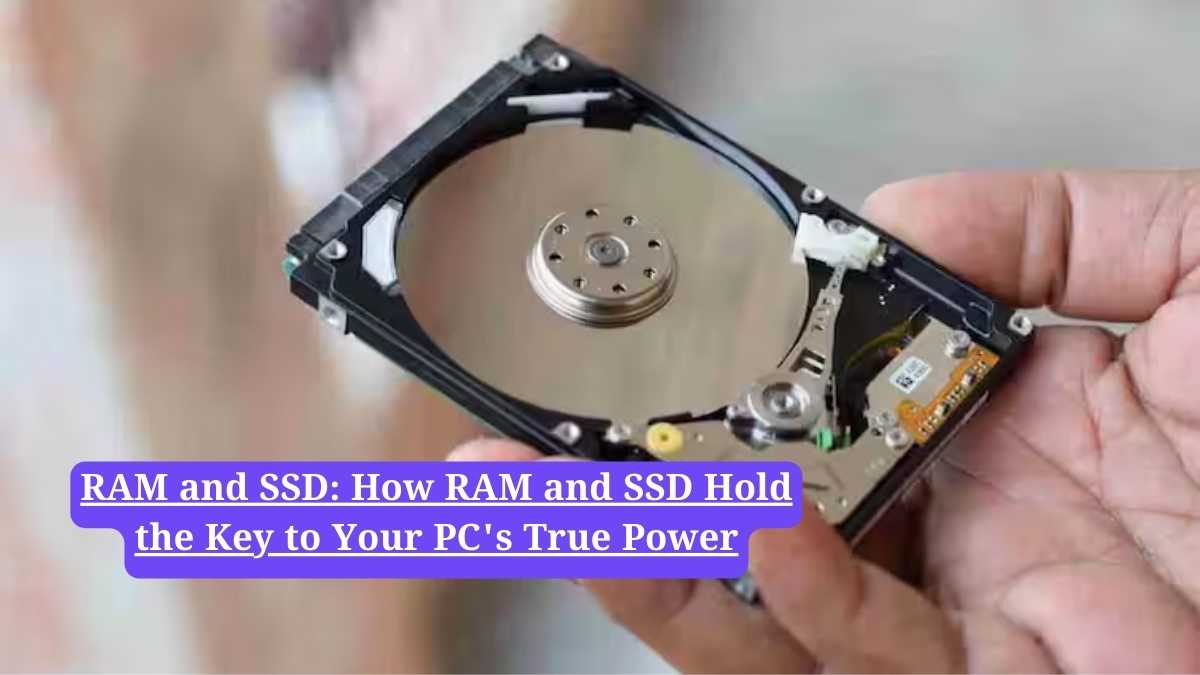Join WhatsApp
Join NowRAM and SSD: In today’s digital age, our computers and laptops have become indispensable tools, woven into the very fabric of our daily lives. Whether for education, professional work, or entertainment, a fast and reliable computer is no longer a luxury but a necessity. The secret to a high-performing, lightning-fast computer lies within two critical components: RAM (Random Access Memory) and SSD (Solid State Drive). But what exactly do these components do, how do they work together, and why are they so crucial for your system’s performance? Let’s dive deep into the world of RAM and SSD to uncover their mysteries.
What is RAM and What Does It Do?
Think of RAM as your computer’s short-term or temporary memory. When you launch a program, open a file, or start an application, the data required for that task is loaded from your storage drive into the RAM. This is because RAM is significantly faster than any long-term storage, allowing it to feed data to the processor almost instantaneously.
Imagine you’re multitasking on your laptop, perhaps browsing the web with multiple tabs open in Google Chrome, editing a document in Microsoft Word, and listening to music simultaneously. The data for all these active applications is stored in the RAM. This allows you to switch between them seamlessly without any delay, as the processor has immediate access to the necessary information. However, it’s crucial to remember that RAM is a volatile memory. This means that as soon as you shut down your computer or the power is cut, all the data stored in the RAM is wiped clean.
What is an SSD and Why is its Role So Important?
An SSD, or Solid State Drive, serves as your computer’s long-term memory. In the past, computers relied on HDDs (Hard Disk Drives), which used spinning magnetic disks to read and write data. SSDs, on the other hand, are a modern storage solution with no moving parts; they operate using flash memory, similar to the technology in a USB drive.
The single most significant advantage of an SSD is its incredible speed. It is exponentially faster than a traditional HDD, which translates to a dramatically improved user experience. Your operating system, games, and software applications will load in a fraction of the time. When you power on your computer, the system quickly loads essential data from the SSD into the RAM. This is why PCs and laptops equipped with an SSD can boot up and be ready to use in just a few seconds.
The Key Differences: RAM vs. SSD
While both are essential, RAM and SSD serve very different purposes. Here’s a breakdown of their core differences:
- Speed: RAM is exponentially faster than an SSD. It is designed for immediate data access for the processor.
- Data Storage: An SSD is designed for permanent, long-term data storage, keeping your files and operating system safe even when the power is off. RAM, conversely, only stores data temporarily while the computer is running.
- Volatility: RAM is volatile; it loses all its data when the power is turned off. An SSD is non-volatile, meaning it retains all stored data indefinitely without needing power.
- Primary Use Case: RAM’s purpose is to serve the processor with the data it needs for active tasks. The primary role of an SSD is to store the operating system, applications, and your personal files.
Why You Need Both for Optimal Performance
A computer’s speed and smoothness are the result of a powerful synergy between RAM and an SSD. Having a sufficient amount of RAM allows you to run multiple applications simultaneously without experiencing lag or slowdowns. More RAM means more space for active data, leading to a fluid multitasking experience.
Meanwhile, a fast SSD ensures that your entire system is responsive. It drastically reduces boot times, speeds up application and game loading, and makes opening and transferring large files a breeze. For a truly fast, efficient, and enjoyable computing experience, a healthy combination of both ample RAM and a speedy SSD is not just recommended—it’s essential.












